Watch Lamborghini Huracán Sterrato show off Rally mode on snow
This is really taking the piste
Lamborghini has released a new video demonstrating the off-road capabilities of its new jacked-up, off-road oriented Huracán Sterrato, this time in snow and ice conditions.
The Sterrato is Lamborghini’s equivalent to Porsche’s 911 Dakar and, with its chunky tyres, plastic cladding, spot-lamps, roof-rack and raised ride height — not to mention the specially-calibrated all-wheel-drive system — is designed to tackle tougher and looser surfaces than the kind on which the Huracán would normally be at home.
Revealed in November, the Sterrato (Italian for “dirt road”) represents something of a landmark car for Lamborghini, marking the final outing for the company’s 5.2-litre naturally-aspirated V10, an engine that first made its debut back in 2003 and which is also found behind the rear seats of Audi’s R8.
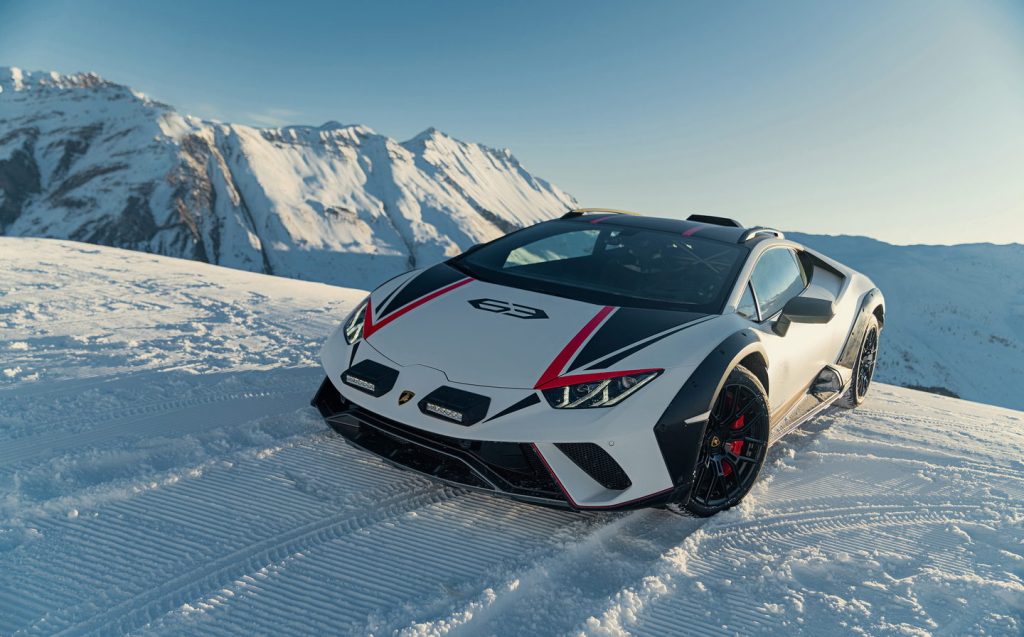
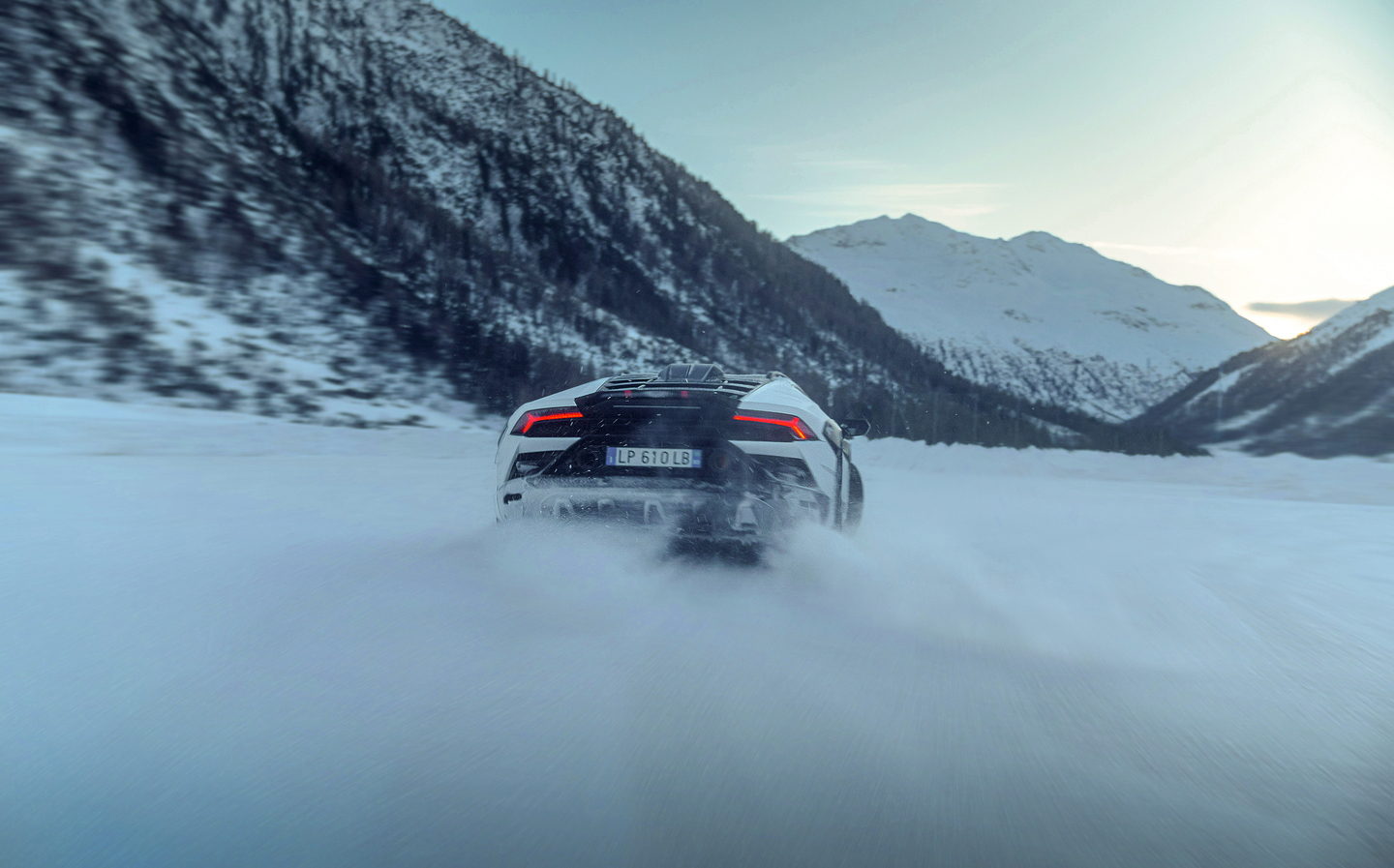
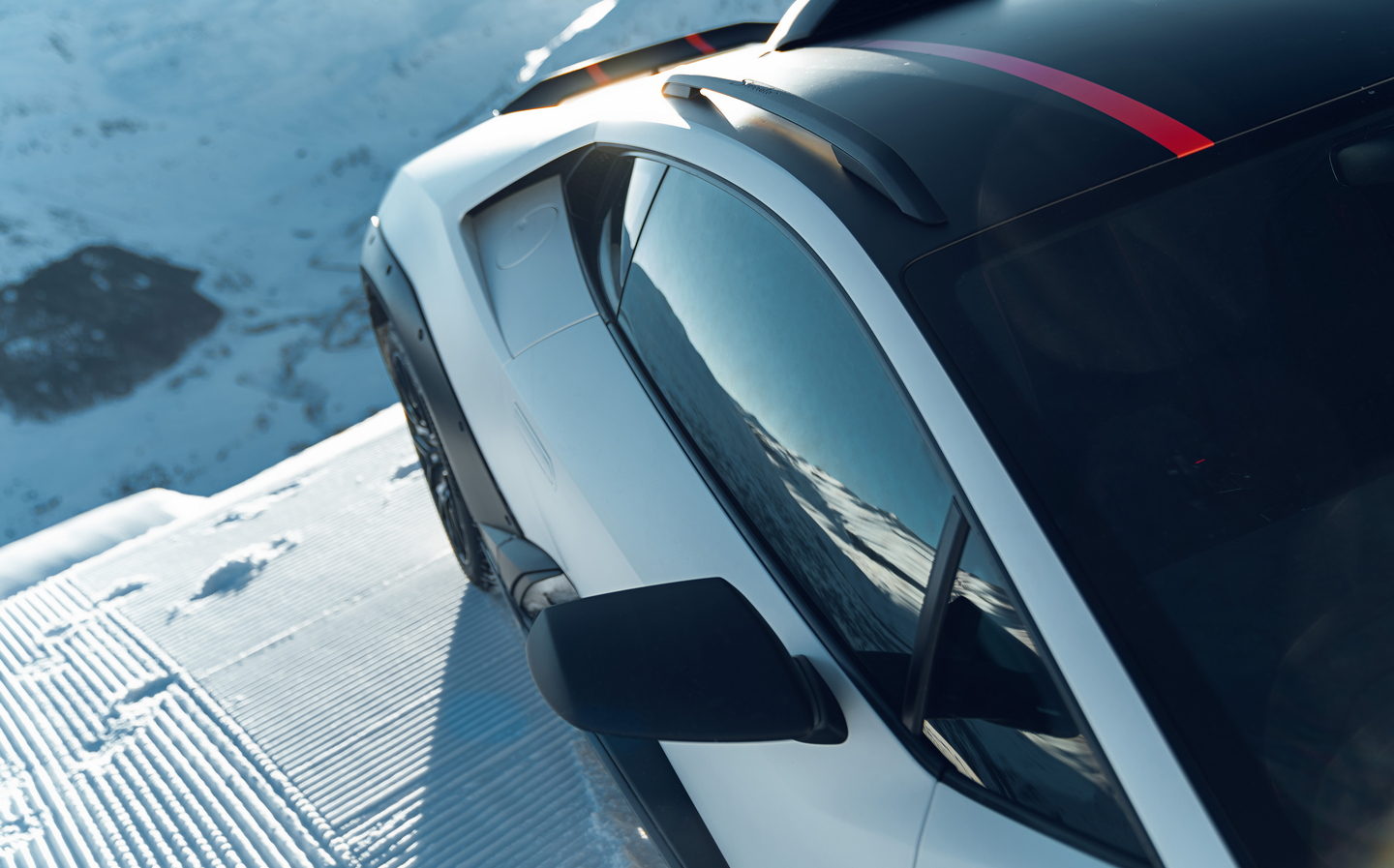
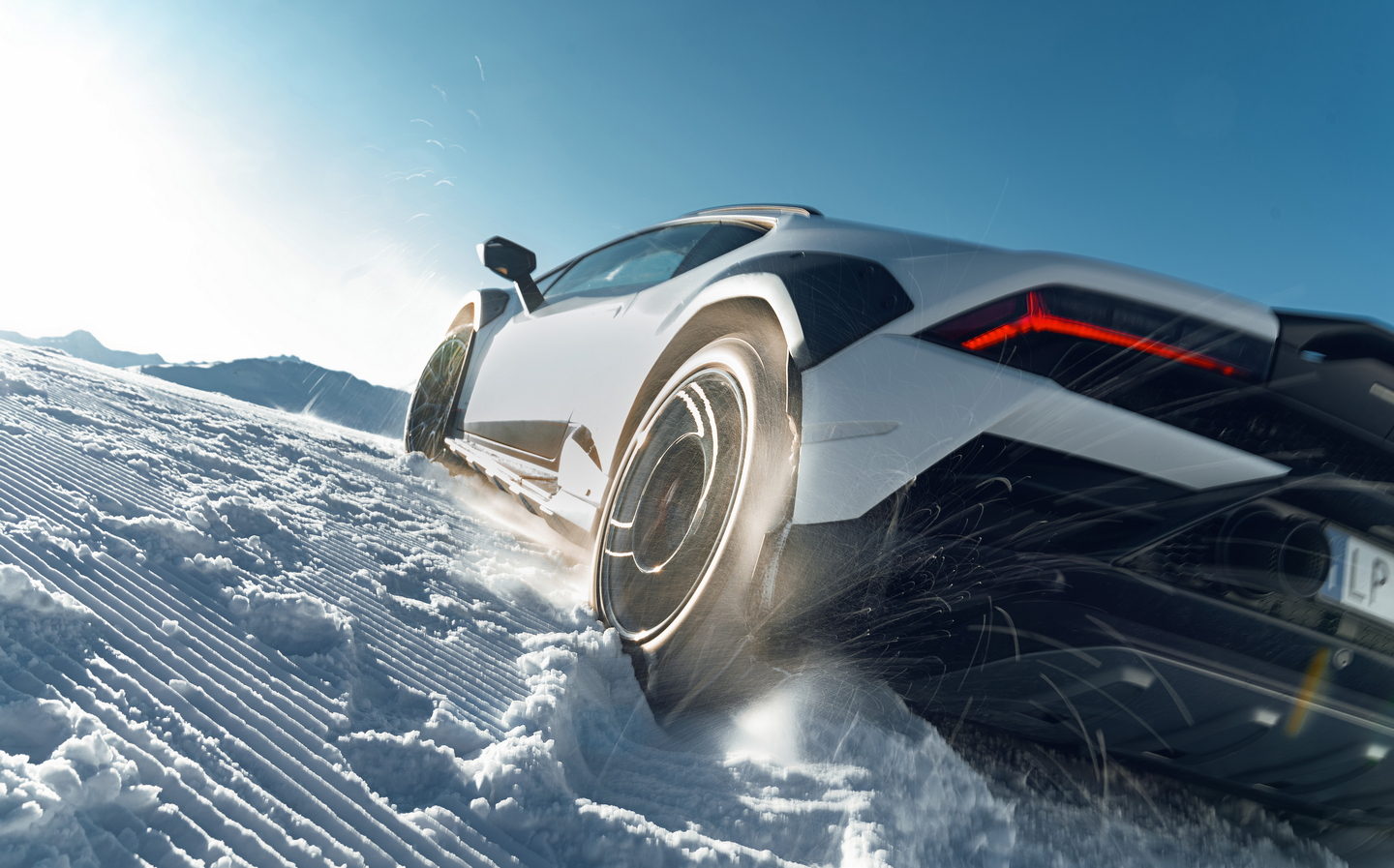
In the run-up to the Sterrato’s unveiling, Lamborghini released a series of videos displaying the model’s off-road ability on a range of different dirt, sand and gravel surfaces but this is the first time we get to see how the variant copes with chillier climes.
Filmed at “an exclusive ski resort in the Italian Alps” the white Sterrato with black carbon-fibre accents and red and black racing stripes can be seen slipping and sliding around the roads of the resort, towing a skier and racing them down a twisting ski-run and around snow-covered, forested roads.
Porsche 911 Dakar video review: Getting to grips with off-road 911 on snow
The key to effectively getting the Sterrato’s 602bhp and 413lb ft of torque onto the road or snow surface, Lamborghini says, is the upgraded driving mode system. It features Strada and Sport settings for the road but also a Rally setting for low-grip surfaces to tailor the car’s power delivery and traction control to the prevailing conditions.
Power is sent to the four wheels through a seven-speed automatic gearbox and a mechanical locking rear differential — the latter for optimum traction.
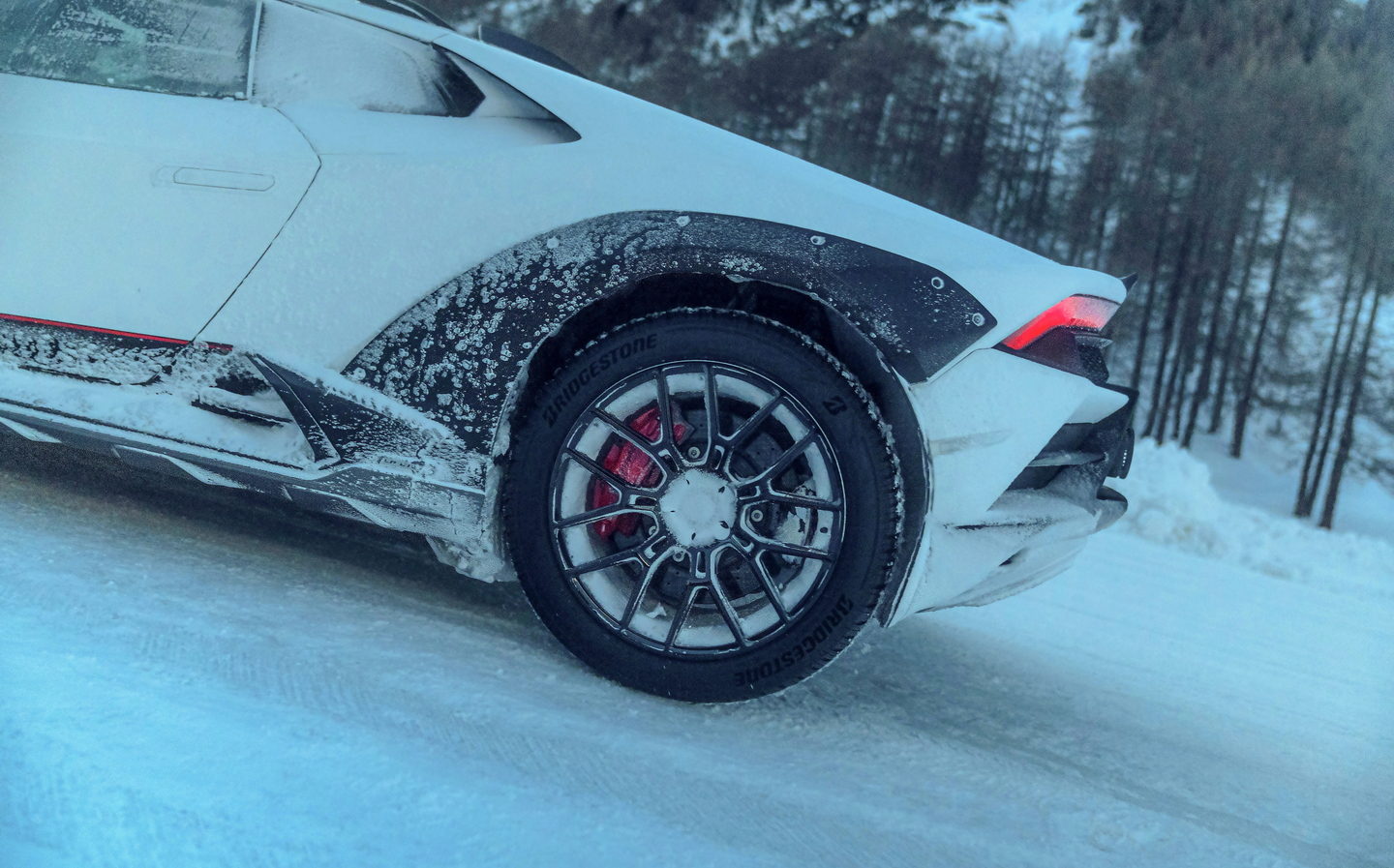

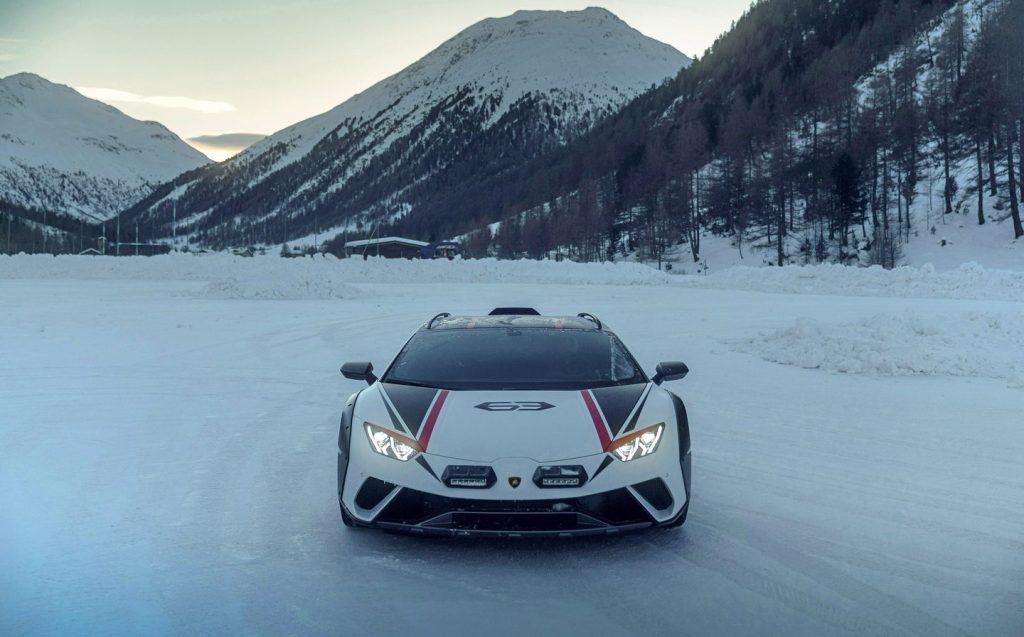
Enabling the car in the video to mix it with the skier on the snow and ice are a set of Bridgestone Dueler run-flat tyres, specially adapted for the Sterrato.
Those bigger tyres are the reason that the Sterrato is limited to around 160mph, making it the slowest Lamborghini in a straight line in decades, though it can still sprint to 62mph from rest in a perfectly brisk 3.4 seconds.
Other aspects of the Sterrato’s design allow it to keep going in situations that might otherwise flummox a standard Huracán or, at the very least result in the replacement of some expensive bits of bodywork.
The front-most part of the underbody, for instance, is finished in tougher aluminium while the sills, rear diffuser and wheel arches are all reinforced to make it that more adept in off-road conditions where rocks, flying gravel or bigger lumps of ice may be encountered. In all, the Sterrato rides some 44mm higher than a normal Huracán.
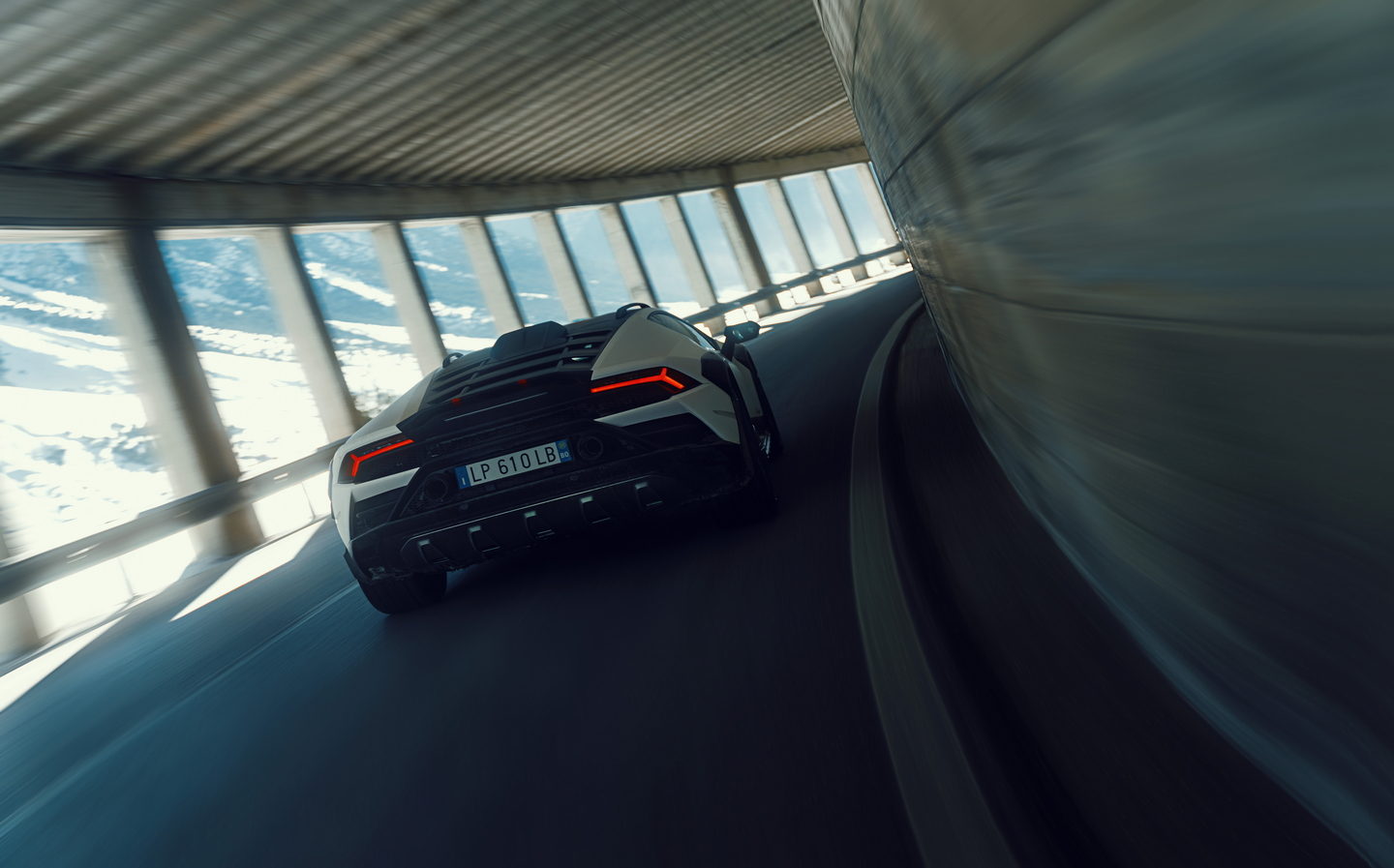
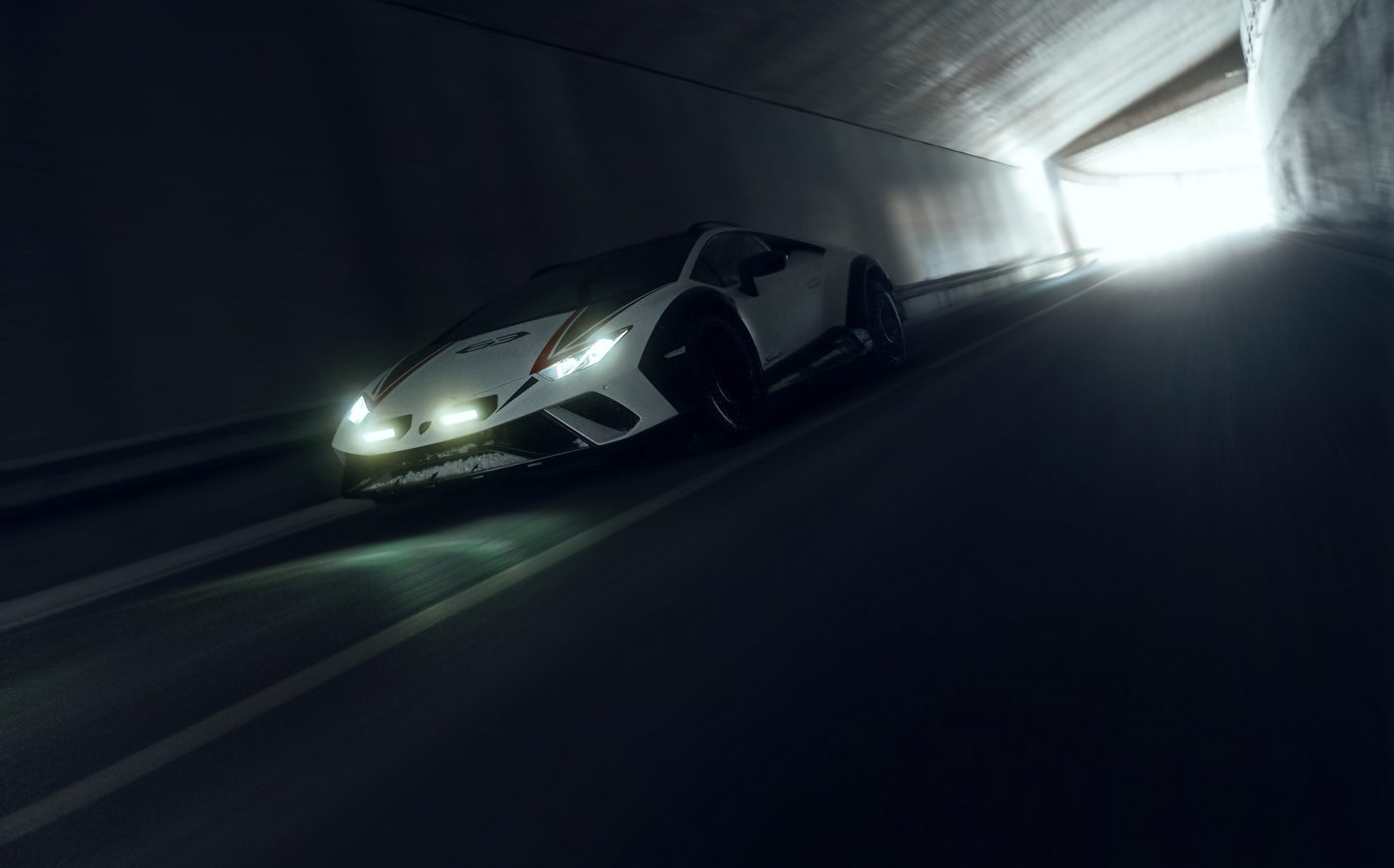
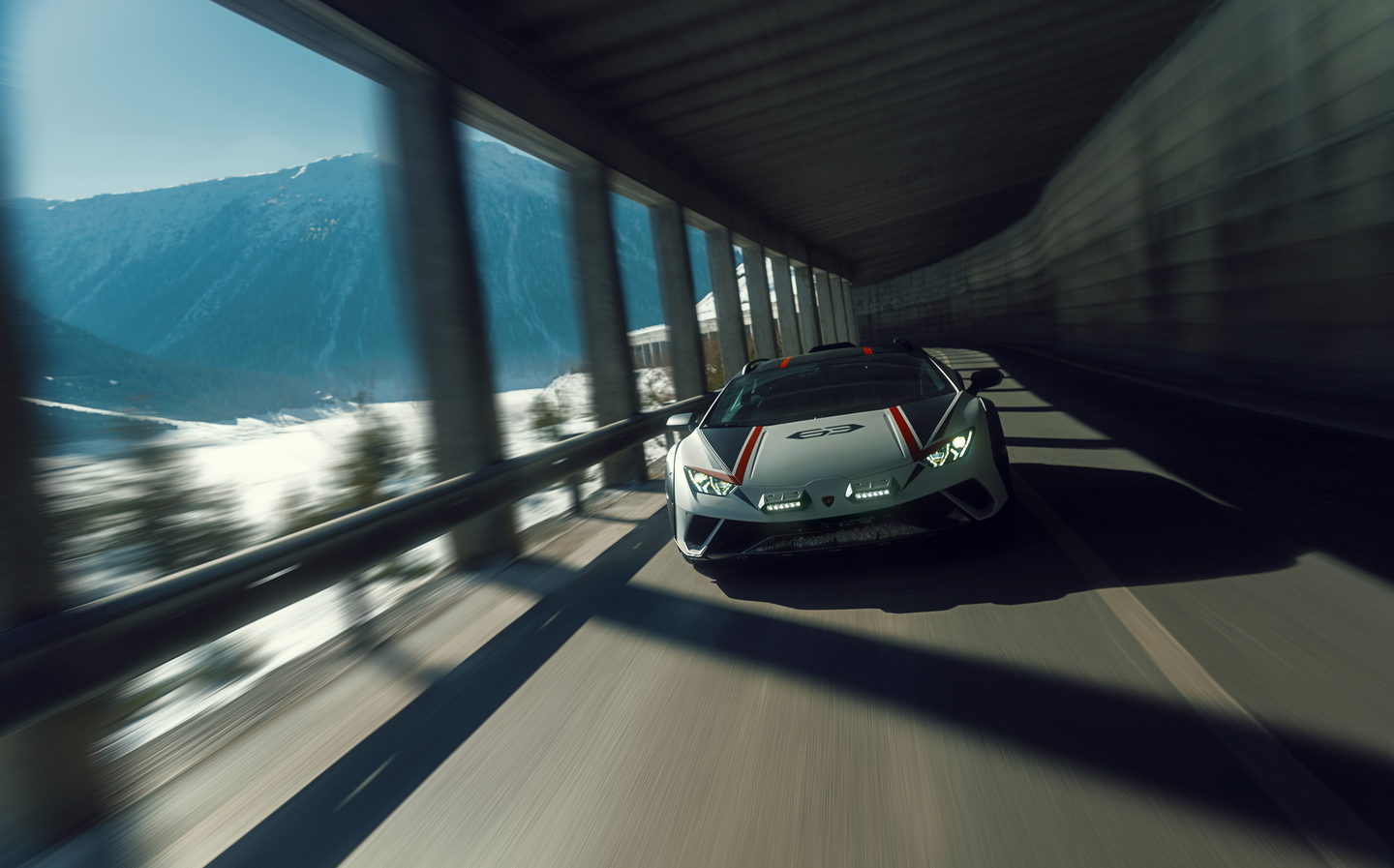

Up top, rather than standard side air intakes for engine cooling, the Sterrato features a single big snorkel-style air intake on the roof, to better prevent against dust and gravel from blocking the air filters.
Lamborghini’s release of the latest video comes ahead of the commencement of the model’s relatively short production run later this month.
Just 999 examples of the Huracán Sterrato are slated for production — exactly 1,501 units fewer than the 911 Dakar — with deliveries of the model due in the summer.
UK prices will likely start from around the £230,000 mark. This potentially makes the model around £50,000 more expensive than its nearest rival, the 911 Dakar, though it’s still approximately £30,000 cheaper than the track-focused Huracán STO.
And with the V10 taking its final bow, the Sterrato marks the end of an era: it is the last Lamborghini not to feature some form of electrification. Evolving emissions rules close the door on naturally-aspirated engines such as the V10 in favour of smaller hybrid-assisted engines and pure-electric drivetrains; the Huracán’s replacement is due to be powered by a twin-turbocharged hybrid-assisted V8.
Related articles
- After reading about the new Lamborghini Huracán Sterrato, you might like to read what Jeremy Clarkson had to say about the new Countach
- You’ll want to read all about how Lamborghini will produce its first electric car by 2030
- And don’t miss our preview of the next generation of the Lamborghini V12 engine
Latest articles
- Audi S5 2024 review: Audi smells blood in battle with BMW
- F1 2024 calendar and race reports: What time the next grand prix starts and what happened in the previous rounds
- AA calls for graduated licensing scheme to prevent deaths of young, inexperienced drivers
- Porsche Macan 2024 review: Entry-level electric SUV is a marathon runner, not a sprinter, but that doesn’t affect its all-star athletic appeal
- How your 10-year-old can get behind the wheel of a Mercedes, Porsche or Bentley … and why you should do it
- Lotus Eletre 2024 review: Is the electric Lotus SUV an abomination or a class act?
- Prices for hot Nissan Ariya Nismo announced … red sill strip light included
- Return of the Renault 4: Full details and images from Paris motor show unveiling
- Elon Musk unveils ‘Cybercab’ robotaxi for claimed 2026 rollout and offers guests first rides … in controlled environment













